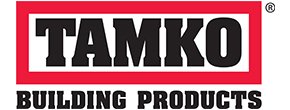When it comes to durable roofing material, nothing matches metal roof. These roofing are expected to last 40-50 years, but DIY metal roof installation is a chore. You can save thousands of dollars with the DIY method, but there’re many safety & building code considerations to take into consideration. There’re many types of metal roofing, so before settling on do some research on which metal panels you wish.
Take measurement of the roof:
To obtain an idea of how much roofing material you will require you’ve to take a few measurement of your roof. Measure the width, length and rise of one section. The distance between the lowest and the highest point of the roof is the rise.
Remove or start laying metal roof over existing roof:
According to most building codes you are allowed to install two roofing layers, so if you re planning to install a metal roof on an existing roof, ensure to check the layers. If you are thinking of replacing your roof, start tearing it off. Before removing the roof, check the weather. You will need clear weather for a day or two to finish the job.

Place the moisture barrier:
Lay down a moisture barrier before installing metal roofing. Roofing felt papers are useful here. Just staple it into place.
Install Drip Edges and Closure Strips:
Start placing drip edges along the eaves & rake of the roof. Secure them with 1-¼-inch galvanized roofing nails. Apply sealant tape along the drip edge and then chop back the backer paper of the closure strip to keep it on the top of the tape. Avoid stretching out the closure strip.
Install metal roofing panels:
Begin the installation of metal roof by overlapping the edging by 1/2 to 3/4 of an inch and ensure it is right-angled to the roof line. Keep in mind to lay the metal roofing so the trivial age of the subsequent panel will overlap the bigger edge.
Keep in mind the manufacturer’s guidelines while placing screws. Apply silicone sealant on the bottom of the short edge of the subsequent panel to give a watertight seal. Carry on to add new panels and cut panels where required.
Add ridge cap:
Once all the panels are in place, you’ve to add ridge caps. Ensure the ridge cap laps both roof sides evenly. Draw a chalk line to mark the panels where the ridge cap will rest. Apply sealant tape along the ridge and follow the manufacturer recommended distance, which is generally an inch. Repeat this process on the contrary side of the roof, as well.
When to Call a Professional:
It is highly recommended that homeowners look for professional roofer, especially if it is a first-time DIY roofing project. Metal roofing is heavy and warrant careful handling.
Get in touch with BRS Roofing Supply, if you are looking for top-quality roofing supplies and professional metal roof installation. For any help, or a no-obligation quote, feel free to call us at 470-999-9997!







